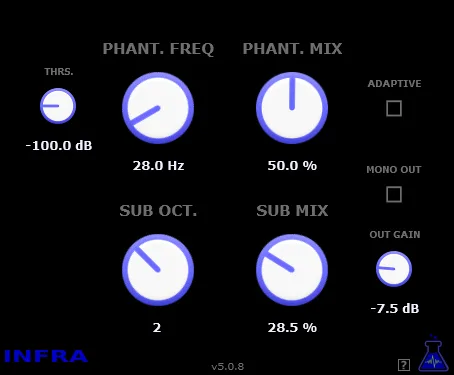An Introduction to Deverb by Audio Damage: Reverb for Electronic Music
In the world of digital audio processing, there are countless tools, but some stand out for their unique philosophy and specialization. This is precisely the case with Deverb from the well-known developer Audio Damage. This plugin doesn’t just add reverb to your sound; it offers a special, dark digital character that makes it an ideal companion for electronic music producers seeking something more than standard spatial effects.
Audio Damage is known for its approach to creating instruments that have their own character and inspire creativity. Deverb is a prime example of this principle, providing the user with not only high-quality digital reverb, but also powerful tools for its formation and integration into the musical fabric.
Depth and Atmosphere: Characteristics of Deverb
Deverb is designed with the needs of modern electronic genres in mind – from techno and ambient to drum and bass and industrial. Its sound is described as “dark,” hinting at the creation of deep, mysterious, and atmospheric spaces that can add a unique dimension to your mixes.
Dark Digital Reverb
Unlike imitations of analog devices or natural spaces, Deverb proudly proclaims its digital essence. This allows you to achieve a clean, controlled reverb sound that sits perfectly in a dense electronic mix. The dark shade means that the plugin tends to create a sense of depth and sometimes even a creepy atmosphere, rather than light or airy spaces. This makes it an excellent choice for creating drone effects, textures, or adding weight and presence to individual track elements.
Sound Shaping Tools: Dual Filters
One of the key features of Deverb is the presence of dual filters located in the processing chain of the reverb tail. These are not just simple equalizers; they provide advanced options for shaping the timbre and dynamics of the echo. You can use them to:
- Cut off unwanted low frequencies that can make the mix “muddy.”
- Mute or amplify certain ranges to change the “color” of the reverb.
- Create effects of gradual fading or transformation of the reverb tail timbre.
This level of control over the tail’s timbre allows you to perfectly integrate the effect into the mix, avoiding conflicts with other elements and giving the reverb the exact character your composition needs.
Rhythmic MIDI Control
Perhaps the most unique feature of Deverb is its integration with MIDI. The plugin allows you to “play” the reverb effect rhythmically using MIDI notes. This opens up completely new possibilities for creativity, allowing you to create:
- Syncopated or pulsating reverb effects that synchronize with the track’s tempo.
- “Gated” reverb tails that appear and disappear according to MIDI triggers.
- Rhythmic textures and patterns, using reverb as a full-fledged rhythmic or percussive element.
This feature takes Deverb beyond the standard space effect, turning it into a dynamic, expressive instrument that can be integrated directly into your arrangements and performances.
Technical Aspects and Compatibility
Deverb is available in VST format, ensuring its compatibility with the vast majority of modern DAWs (Digital Audio Workstations) on Windows (Win32) and macOS (OSX) operating systems. This means you can easily integrate it into your existing workflow, regardless of the platform you’re using. Simply install the plugin, and it will be available in the VST effects list in your favorite music creation software.
Thanks to its specialization in digital sound, powerful filters, and unique MIDI control, Deverb by Audio Damage is a valuable tool for any electronic music producer who wants to add depth, atmosphere, and rhythmic complexity to their tracks. It’s not just reverb – it’s a tool for shaping sound space with its own character.



